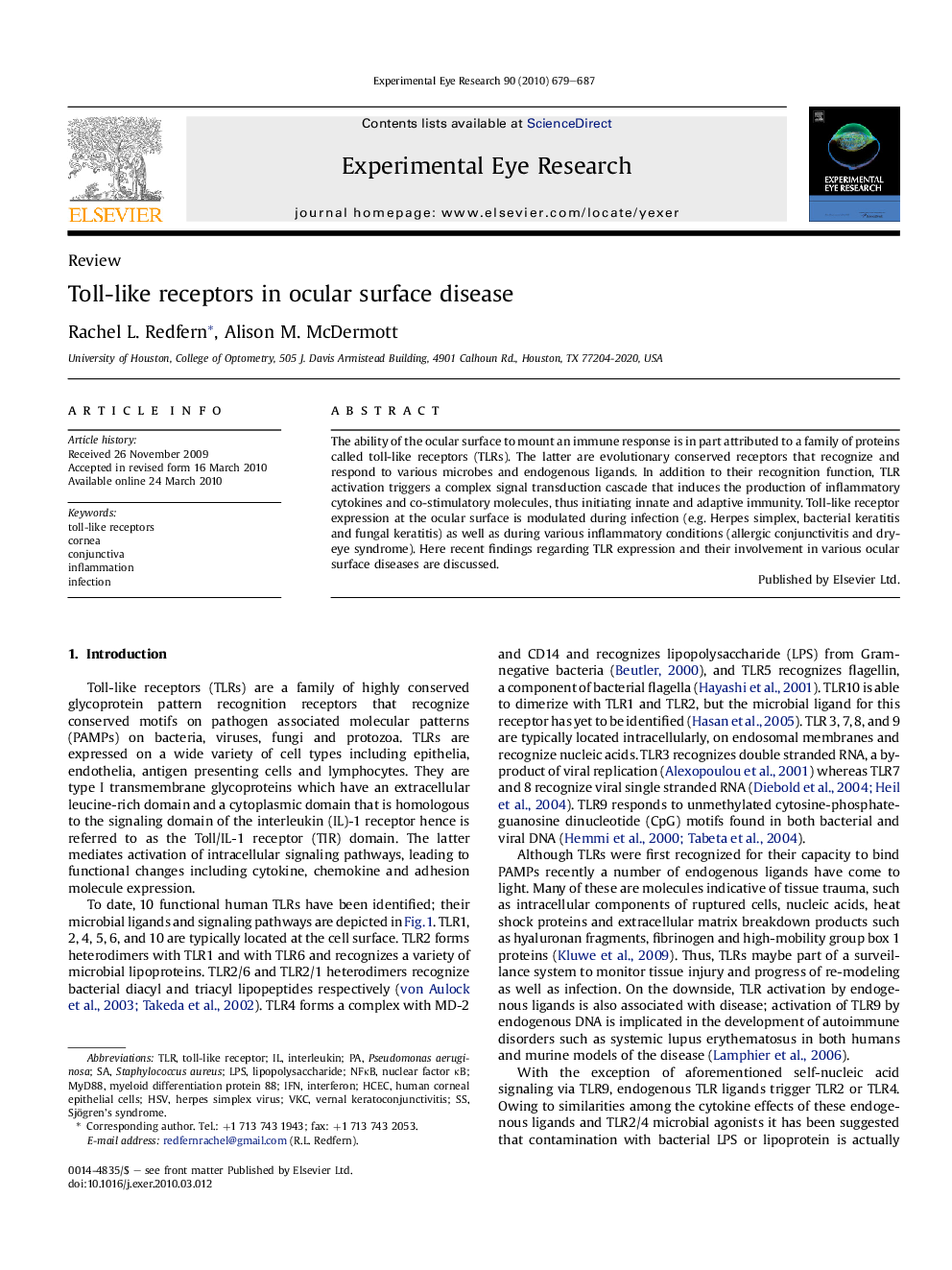| Article ID | Journal | Published Year | Pages | File Type |
|---|---|---|---|---|
| 4011556 | Experimental Eye Research | 2010 | 9 Pages |
Abstract
The ability of the ocular surface to mount an immune response is in part attributed to a family of proteins called toll-like receptors (TLRs). The latter are evolutionary conserved receptors that recognize and respond to various microbes and endogenous ligands. In addition to their recognition function, TLR activation triggers a complex signal transduction cascade that induces the production of inflammatory cytokines and co-stimulatory molecules, thus initiating innate and adaptive immunity. Toll-like receptor expression at the ocular surface is modulated during infection (e.g. Herpes simplex, bacterial keratitis and fungal keratitis) as well as during various inflammatory conditions (allergic conjunctivitis and dry-eye syndrome). Here recent findings regarding TLR expression and their involvement in various ocular surface diseases are discussed.
Keywords
LPSmyeloid differentiation protein 88TLRHSVMYD88HCECNFκBStaphylococcus aureusinflammationinterferonIFNinterleukinToll-like receptorhuman corneal epithelial cellsSjögren’s syndromePseudomonas aeruginosaInfectionnuclear factor κBCornealipopolysaccharideconjunctivaVKCherpes simplex virusVernal keratoconjunctivitisToll-like receptors
Related Topics
Life Sciences
Immunology and Microbiology
Immunology and Microbiology (General)
Authors
Rachel L. Redfern, Alison M. McDermott,
